Mortgages are being credited for helping propel Canada’s Big 6 banks to another blockbuster quarter, which saw a combined $7.6-billion+ in net profits.
 Among the nuggets of information found within the banks’ first-quarter reports:
Among the nuggets of information found within the banks’ first-quarter reports:
- Details from BMO about the success of its 2.99% rate promotions
- Geographic breakdowns of mortgage originations, including details about government insured and uninsured exposures.
- Further details from CIBC about the continued impact of its wind-down of FirstLine and its efforts to hang onto mortgage customers.
The compilation that follows is the fruit of pouring through quarterly earnings reports, presentations and
conference calls. If you’re time-pressed, some of the focal points are highlighted.

*********
Bank of Montreal
Q1 net income: $1.05 billion
(-5% Y/Y)
Earnings per share: $1.53
- “Activity
in the housing market has slowed in response to tighter mortgage rules
and reduced affordability in some regions.” (Source) - Regarding the success of the bank’s 2.99% 5-year-fixed rate mortgage and its effect on cross-selling, Frank Techar, President and CEO, Personal and Commercial Banking Canada, BMO Bank of Montreal, had this to say: “Relative to cross-sell, I think I’ve mentioned this in previous quarters, our five-year fixed, 25-year am mortgage product was very successful last year in bringing new customers into the company. In fact, for everyone that took that product last year, about 40% of them were new customers to BMO and for those new customers coming into BMO, we sold an excess of two other products to them. So we know that is one thing that’s contributing to the growth that we’re seeing overall in the balance sheet. As we continue to bring those customers in, I have a huge amount of confidence in our sales capabilities in our branches at this point.” (Source)
- “Residential
mortgage and home equity line of credit (HELOC) exposures are areas of
interest in the current environment. BMO regularly performs stress
testing on its mortgage and HELOC portfolios to evaluate the potential
impact of tail events. These stress tests incorporate moderate to severe
adverse scenarios. The resulting credit losses vary depending on the
severity of the scenario and are considered to be manageable.”(Source) - Total
personal lending balances (including mortgages, Homeowner ReadiLine and
other consumer lending products but excluding credit cards) increased
9.5% year over year.(Source) - Mortgage balances in Q1 stood at $75 billion, up 12.7% Y/Y from $67 billion, and up 3.3% Q/Q (Source)
- Of BMO’s total mortgage portfolio, 63% is insured, down from 64% in Q4 and 65% in Q3 2012. (Source)
- The average LTV of BMO’s residential mortgage portfolio was 63% in Q1, vs. 62% in Q4. (Source)
- BMO’s residential mortgage portfolio broken down geographically: 41% in Ontario; 19% in B.C.; 16% in Alberta; 15% in Quebec; 6% in Atlantic Canada; and 3% in the rest of the country. (Source)
- “We expect continuing moderate declines in NIM over the next few quarters. Without a change in rates, I think we’re in that environment for the foreseeable future,” said Techar. (Source)
CIBC
Q1 net income: $798 million
(-4.4% Y/Y)
Earnings per share: $1.91 a share
- Residential mortgages were down $1.1 billion, “primarily due to attrition in our FirstLine mortgage business, partially offset by new mortgage originations through CIBC channels.” (Source)
- The
size of CIBC’s residential mortgage portfolio is $144 billion. Of that,
CIBC’s Canadian condo mortgage portfolio totals $16.8 billion. (Source) - Approximately
46% of that is in Ontario, followed by B.C. at 20% and Alberta at 16%.
“The credit quality of this portfolio continues to be high with a net
credit loss rate of approximately 1 basis point per annum,” noted Thomas D. Woods, Chief Risk Officer and Senior Executive Vice President. (Source) - 76% of the bank’s Canadian residential mortgage portfolio is insured, with over 90% of the insurance being provided by CMHC. (Source)
- Condos
account for approximately 12% of CIBC’s total mortgage portfolio, with
about 72% in Ontario and B.C. Similar to its total mortgage portfolio,
77% of the condo portfolio is insured, and the uninsured portfolio has
an average loan to value of 52%. (Source) - The average loan-to-value of CIBC’s uninsured mortgage portfolio based on December host price estimates was 51%. (Source)
- The average LTV ratio for HELOCs was 64% in Q1, up from 59% in Q1 2012. (Source)
- “Our
exit from the FirstLine mortgage broker business continued to progress
well with both conversion volumes and spreads exceeding our targets,”
said Kevin A. Glass, Chief Financial Officer and Senior Executive Vice President. “When
combined with our focus on growing CIBC-branded products, this
contributed to year-over-year growth of 11% in the CIBC mortgage
portfolio, which was well above the industry average.” (Source) - From J. David Williamson, Group Head of Retail & Business Banking and Senior Executive Vice President: “…We’ve got the benefit of the move from [thin] FirstLine spreads…to the CIBC-branded spreads, which are substantively wider. So that has helped this quarter. But of note, our NIMs would be up quarter-over-quarter even without the pivot on the FirstLine…” (Source)
- Williamson added: “…The overall balances in mortgages are declining, not substantively, but they’re declining, as we signalled they would before, right, single-digit kind of overall decline. Within that, you’re absolutely right. If you’d look at the growth in the CIBC-branded space, we’re up over 10%, so very substantive growth in the absolutes in — in the absolute balances of CIBC-branded mortgages, and as a result, all-in NII is up.” (Source)

National Bank
of Canada
Q1 net income: $364 million
(+4% Y/Y)
Earnings per share: $2.03 a share
- “…Every time a mortgage comes up for renewal, what we see is…a negative impact on our margins.”—Diane Giard – EVP, P&C Banking (Source)
- Loans
and acceptances rose $1.8 billion due to growth in residential
mortgages, business and government loans, and acceptances. (Source) - On
a quarterly basis, residential mortgages rose 3% to $34.4 million in
Q1. On an annual basis, they were up 15% vs. $29.9 million in Q1 2012. (Source) - “69% of the (mortgage) portfolio is in Quebec, mortgages in Toronto and Vancouver represented only 11% and 1% respectively.”—William Bonnell – EVP, Risk Management (Source)
- Consumer loans were up 1%, due primarily to home equity lines of credit and indirect consumer loans. (Source)
- During
the quarter ended January 31, 2013, National Bank acquired a portfolio
of residential mortgage loans with a higher credit risk profile for a
total amount of $328 million. As at January 31, 2013, none of these
acquired loans were impaired. (Source) - “The full deployment of our new mortgage platform is expected to start this month as planned. This will enhance client experience, increased cross-selling opportunities and reduced operational costs.”—Louis Vachon – President and CEO (Source)
- “…What we’ve seen is improved cross-sell, especially, with insurance with our own sales force. The challenge remains with the broker channel and we are actually looking at a different strategy with leveraging our call center to promote and enhance our cross-sell abilities and results.”—Helene Baril – Senior Director, IR (Source)
Royal Bank of Canada
Q1 net income: $2.07 billion
(+12% Y/Y)
Earnings per share: $1.36
- “RBC said it has a “well-diversified mortgage portfolio across Canada” and that it continues to conduct “Ongoing stress testing for numerous scenarios including unemployment, interest rates, housing prices.” (Source)
- RBC says it has “Strong underwriting practices with all mortgages originated through our proprietary channels.” (Source)
- Total value of RBC-held residential mortgages in Q1 was $175 billion, up from $167 billion a year ago, with an average LTV of 47% (Source)
- RBC’s residential mortgage portfolio was distributed geographically like so: 41% in Ontario; 20% in B.C.; 16% in Alberta; 10% in Quebec; 8% in Manitoba/Saskatchewan and 5% in Atlantic Canada. (Source)
- 40% of its mortgage portfolio is insured, vs 60% uninsured. (Source)
- RBC
CEO Gord Nixon said during the conference call: “There is no question
that the Canadian Banking industry is facing slightly slower growth as a
result of slower mortgage demand. But notwithstanding these forces, we
believe we can continue to achieve or exceed our objective of a 25%
growth premium to the market for a number of reasons.” (Source) - Nixon
added: “RBC has a proven ability to cross-sell more effectively than
our Canadian peers, and we see opportunities to provide additional
banking products to our existing customer base, as well as new ones.” (Source) - Regarding
the bank’s retail credit transformation project, Nixon said, “This
significant project has allowed us to automate our end-to-end
back-office capabilities so that we can process mortgage applications
more efficiently. This has already resulted in significant cost savings,
has freed up our sales staff time and has improved the customer
experience. We intend to roll this system out to a number of other
consumer credit products over the coming years.” (Source) - “(Loss) provisions on residential mortgages of 1 basis points are consistent
with our historical performance.” (Source) - Talking about the bank’s mortgage originations, David I. McKay,
Group Head of Personal & Commercial Banking, said: “So as we look
at overall mortgage growth, we still had a very good quarter. We’re
seeing growth moderate across mortgages closer to the 5% range as you’ve
seen year-over-year. We still haven’t seen the full impact yet, I
think, of the B20 regulations as they will start to drag the pipeline.
You may see some further moderation of Canadian growth rates going
forward. As far as margins between the insured and uninsured, we don’t
differentiate our pricing structure to our customers based on insured
and uninsured. So the margins we originate in those 2 businesses would
be the same. So there’s not a variability there. Our customers are
certainly choosing 5-year terms and 4-year terms and locking in and
that’s good for stability of the industry going forward in any type of
rising rate environment. So I think we would originate a lower
proportion of insured mortgages because we don’t deal with a broker
channel. And when — if you look at the balance sheet of our peers, they
have a higher base of insured. Part of that is originating through the
broker channel, which tend to originate first-time homebuyers at a much
higher proportion of insured versus uninsured mortgages.” (Source) - McKay was asked about the bank’s mobile sales force – whether those salespeople receive bonuses for the mortgage rates they bring in and whether that might be a potential regulatory issue. (That question may have been prompted by this article.) McKay replied: “…the commission structure is affected by the average mortgage rate negotiated between the sales rep and the client. So that certainly is part of the structure and important part of our business model. As far as the regulatory impact, I don’t know, but we’re not aware of any regulatory impact of that commission structure. It’s been in place for a long time.” (Source)
Scotiabank
Q1 net income: $1.63 billion
(+13% Y/Y)
Earnings per share: $1.25
- Net
interest income (on a taxable equivalent basis) was $2.8 billion, up 7%
from the previous quarter. Scotia says this was attributable to
acquisitions and asset growth, “primarily in business lending and
residential mortgages.” (Source) - Scotia
says, “stress tests on the mortgage portfolio confirm that potential
losses under a severe economic downturn are manageable. (Source) - The
bank’s residential mortgage portfolio totalled $188 billion in Q1,
including approximately $29 billion from its acquisition of ING. (Source) Of this total, $169 billion is related to freehold properties and $19 billion is related to condominiums. (Source) - The bulk of Scotia’s mortgage portfolio is in Ontario ($95 billion), followed by B.C. ($29 billion) (Source)
- Of
Scotia’s residential mortgage portfolio, 58% is insured (down from 60%
in Q4 2012), and 42% is uninsured (up from 40% in Q4). (Source) The uninsured portion has an average loan-to-value ratio of approximately 56%. (Source) - Residential mortgages grew 8% Y/Y. (Source)
- Scotia’s residential mortgage volumes increased 24.7% Y/Y, and 17/5% Q/Q. (Source)
- Scotia
Bank CEO Rick Waugh said, the bank’s Canadian residential mortgage
portfolio remains in “good shape”. Delinquency is stable and losses
continue to be insignificant. (Source) - “We
believe that solid economic fundamentals and the new mortgage
regulation changes will enable the Canadian market to remain healthy and
balanced,” said said Robert H. Pitfield, Group Head and CRO. (Source) - “The
continued low interest rate environment and reasonable economic
performance should allow consumers to manage debt levels well,” Pitfield
added. “Credit quality and performance of our portfolio remains strong.
Our disciplined and consistent underwriting standards through all of
our origination channels have resulted in extremely low loan losses.
We’ve stress-tested our portfolios under many severe assumptions;
they’ve stood up well, and confirm our risk appetite is appropriate.” (Source) - Asked
about where the increase in mortgage revenues is coming from, Anatol
von Hahn, Group Head, Canadian Banking, replied, “more of the (variable-rate) mortgages…that were booked one, two and three years
ago — as they are coming due, are now taking three, four and five year
fixed rate mortgages. And that’s giving us a lift on the margin…” (Source) - Asked
if the bank is seeing a pickup due to being more active in the broker
market, von Hahn said, “No, if you go back a little bit, the spread that
was being made on variable rate mortgages at the time when they were
booked was less than what we’re making on a spread on the fixed rate
mortgages that are now being booked. So, it’s not a question of channel.
What we do have, which I think might be your point about the channels,
we have three different channels through which we distribute and they
are all doing very, very well in an environment where clearly mortgages –
there are less mortgages on the market than they were at this time last
year.” (Source) - “…One of the things that we’ve done on the mortgage side is that we’ve announced that ING will continue to generate mortgages through its own direct model. The other means by which they had in the past been generating (mortgages) we have stopped, which is through white labels and the broker side. (Source)
TD Bank
Q1 net income: $1.79 billion
(+21% Y/Y)
Earnings per share: $1.86
- TD’s residential mortgage portfolio stood at $155 billion in Q1, up from $153 billion in Q4 2012 and $144 billion a year ago. (Source)
- TD says its real estate secured lending (RESL) volume increased 5% YoY (Source)
- TD
adds its RESL portfolio, including securitized mortgages, benefits
from the fact that 68% of the portfolio is government insured, 75% of HELOCs are in
first lien position and a further 20% are in second to a TD first (Source) - 16.3% of TD’s Canadian mortgages have remaining amortizations of 30 years or more. (Source)
- Average HELOC LTV at origination is 61% compared to 69% for residential mortgages. (Source)
Note: Transcripts are provided by third parties like Morningstar. Their accuracy cannot be 100% assured.
Steve Huebl & Rob McLister, CMT







One has to wonder how eager they’ll be to lend at cut throat rates should they lose the flexibility of having the government guarantee 7 out of 10 mortgages on their books. Considering that mortgage lending is such a huge part of their profits, isn’t the government effectively subsidizing the default risk for bank shareholders?
forgot to mention the tidbit of information regarding CIBC and the outsourcing of many mortgage admin functions to India. this will result in a whole slew of lay-offs within that mortgage department.
good luck to the sales staff, underwriters and solicitors that will be getting help from the India branch.
The majority of their profit from their mortgage porfolio comes at the expense of their clients – IRD penalties. 80% of 5 year fixed rate mortgages never make it to 5 years.
I personally find it rather disturbing that 6 of our nations 7 wealthiest companies are banks – the top 3 being banks – not gas, oil or gold or any other natural resource company – but banks – making profit on the backs of every day canadians.
I am more surprised by, that during a period when “There is no question that the Canadian Banking industry is facing slightly slower growth as a result of slower mortgage demand” (Gordon Nixon), the combined YOY growth among the six banks was an astonishing 40.7% – yet the alternate lenders are still active and thriving. And all this lending has been based on very healthy margins in both the variable and fixed rate mortgages.
Great summary. Most appreciated.
it is, it is
And the profits deriving primarily from increasing loans balances on a single block of assets being traded by 70% of the population.